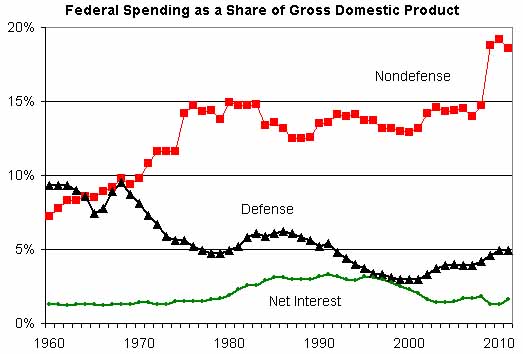Marines Posture Over Expeditionary Fighting Vehicle
BY Herschel SmithThe Orange County Register has an interesting article on the next U.S. Marine Corps installment of their defense of the Expeditionary Fighting Vehicle (EFV).
CAMP PENDLETON – On a cool day in late June, the Marines asked local media to board this seaside base and learn more about a new 80,000-pound hulking war machine – the Expeditionary Fighting Vehicle or EFV.
They handed out information packets with glossy brochures, touting the $16.7 million amphibious machine as far more lethal, agile and sophisticated than the current assault vehicle, now nearly 40 years in service.
A video promo for the EFV ended with a slide of these words from Commandant Gen. James Conway: “The EFV is essential to the Marine Corps mission. There are programs that are absolutely and vitally important. One of those is our EFV.”
It was a polished presentation and the Marine Corps will need its best sales pitch with prototypes currently being tested. In a tough economy, the Corps is trying to sell the beast of a vehicle, first to the American people, and second, to members of Congress, who ultimately will write the check for it.
The price tag is steep: $13 billion for the entire program with detractors already having put the fighting machine in the crosshairs. And, immersed in land-locked battles in Iraq and Afghanistan, the Marine Corps itself stands at a crossroads.
If approved, the hulking ship-to-shore vehicle would solidify the amphibious future of the Corps.
If rejected, it raises the question: Will the Marines be rendered another land army?
The OCR also has an interesting multimedia presentation in which the following question, among others, is posed: “Would helicopters and Ospreys ferrying troops to shore, landing behind enemy beach positions, remove the need for a beach landing under fire?”
Indeed. Has the OCR been reading The Captain’s Journal? It isn’t that I don’t see the tactical value of the EFV. Clearly, I do. It’s that I don’t yet see the strategic value of the EFV, and that I have recommended a different paradigm.
I do not now and have never advocated that the Marine Corps jettison completely their notion of littoral readiness and expeditionary warfare capabilities, but I have strongly advocated more support for the missions we have at hand.
Finally, it occurs to me that the debate is unnecessary. While Conway has famously said that the Corps is getting too heavy, his program relies on the extremely heavy Expeditionary Fighting Vehicle, that behemoth that is being designed and tested because we want forcible entry capabilities – against who, I frankly don’t know.
If it is a failing state or near failing state, no one needs the capabilities of the EFV. If it is a legitimate near peer enemy or second world state, then the casualties sustained from an actual land invasion would be enormous. Giving the enemy a chance to mine a beach, build bunkers, arm its army with missiles, and deploy air power, an infantry battalion would be dead within minutes. 1000 Marines – dead, along with the sinking of an Amphibious Assault Dock and its associated EFVs.
No one has yet given me a legitimate enemy who needs to be attacked by an EFV. On the other hand, I have strongly recommended the retooling of the expeditionary concept to rely much more heavily on air power and the air-ground task force concept. It would save money, create a lighter and more mobile Marine Corps (with Amphibious Assault Docks ferrying around more helicopters rather than LCACs), and better enable the Marines to perform multiple missions. I have also recommended an entirely new generation of Marine Corps helicopters.
The EFV is designed for a near peer state (or close to it), and its presupposition is active enemy fire while ferrying troops ashore while providing covering fire. It is a reversion to 65-year old amphibious warfare doctrine with updated equipment. But if the state upon which we intend to conduct forcible entry is capable of rocket fire against navy vessels (positioned 25 miles offshore over the horizon in order to increase the likelihood of survival), the EFVs will become deadly transport vehicles for Marines. If the nation-state is in fact not capable of such opposing fire, then the EFV is not needed.
There is also a good video of the EFV in action:
But the tactical capabilities of the EFV are not at issue. It’s the place that it occupies in the strategic plan. I still reject the Commandant’s dilemma, i.e., that we fund the EFV or the Marines become obsolete. This is the thinking of outdated, mid-20th century, South Pacific strategy, not that of the 21st century. The U.S. Marines will always be needed, but the paradigm must be retooled. It must be. All Marine Corps readers, listen to me, and listen to me well.
I continue to pose the following questions to the strategic thinkers in the Marine Corps. Where are we going to invade? What country, or what failed state? What are the tactical capabilities of this country or failed state, and why do we need floating tanks? Does this state have shore to ship missiles? Have you thought much about a fighting vehicle that has all of the capabilities of the EFV (MK44 cannon, stabilized turret, etc.) but without the need for flotation? Why can’t troops come ashore via air delivery (e.g., fast-roping) rather than sitting in a floating tank?
I have proposed that the U.S. Marines transport behind enemy lines and take the beach head, thus allowing the Navy to deliver more land-based vehicles to the campaign rather than the Marines fighting their way on shore through a hail of missile and artillery fire and water borne mines, and in response, we get the stuck record of the current argument: “Give us the EFV or we cease to exist.”
Sorry, I don’t buy it. Do better.




